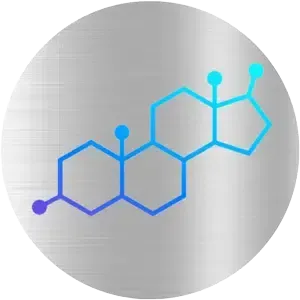A lot of the visible signs of aging can be traced back to one thing – loss of volume. As the tissues in the face lose volume and become thinner over time, that can make the lines around the cheeks, nose and mouth seem hollow. Facial fillers are designed to, as the name implies, fill that volume, smoothing out wrinkles and restoring a younger appearance as a result.
The experts at ProHealth Solutions have a variety of facial fillers that will help deliver the results you want. If you would like to learn more about what we can do for you, please don’t hesitate to get in touch for a free evaluation. You can give us a call at 727-873-6536 , or you can use our online form.
Types of Facial Fillers
One thing you need to know is that a facial filler is not Botox – it’s a completely different substance. At ProHealth Solutions, we only use safe, effective, FDA-approved fillers. Here are just a few types that are commonly used.
Hyaluronic acid (HA)
Your skin already has HA. It helps keep it hydrated. Fillers that contain HA are in gel form, and provide results that usually last between six months to a year. However, in many instances, those results last longer until the body absorbs the HA particles. In order to minimize discomfort, HA is typically infused with lidocaine. Juvéderm and Restylane are two of the more common fillers that include HA.
Calcium hydroxylapatite (CaHA)
This substance is also natural, primarily found in the bones. The calcium particles that are part of the CaHA filler are usually thicker than HA filler. This filler will usually last longer as a result – at least a year in many instances.
Poly-L-lactic acid (PLL Acid)
PLL acid is different from HA and CaHA in that it’s synthetic. If you’ve ever had dissolvable stitches, they contained PLL acid. It helps the skin develop collagen, the natural substance that helps make your skin smooth, strong and flexible. The PLL acid particles actually disappear relatively quickly, but the collagen lasts for two years or even longer.
Polymethylmethacrylate (PMMA)
This is another synthetic substance that breaks down in the body after application. When used as a filler, it’s actually a very small, almost microscopic ball that sits beneath the skin for an indefinite time period. The ball provides continued support to the treated area. PMMA also contains collagen.
Autologous fat injections (AFI)
AFI will require a surgical procedure to administer, but the results last longer than any of the other fillers mentioned above. A doctor performs liposuction to collect fat from another area of your body. After purification, the fat is then injected into areas of the face that need to be filled. When performed by a skilled, trained professional, AFI is very safe, and delivers outstanding results.
How Long Do Facial Fillers Last?

The answer to this question depends on the type of filler used, the area that’s being treated, and the patient receiving the treatment. The denser the filler, and the deeper it’s injected, the longer the results will last. It’s important to realize that there is no certain rule for how long your filler will last. There is a chance that your doctor will have to repeat the treatment at a later date.
In general, synthetic fillers last longer than natural fillers. Also, injections near the nose will usually last longer than those administered closer to the lips. If you undergo an AFI procedure, your surgeon may have to inject more than is needed, since some of the fat won’t survive. While this will lead to a fuller appearance than the patient might expect, that will eventually settle into something that looks more natural.
Risks of Facial Fillers
The vast majority of facial filler procedures are completely safe, with minimal side effects. Patients may experience some bleeding, bruising, and possible scarring. Other potential issues include swelling, rashes and redness. In some instances, there can be a slight risk of infection where the filler was administered. Necrosis, or loss of skin, can also occur due to blood flow disruption.
Are Facial Fillers Worth it?
If you talk to someone who ever had facial fillers, there’s a very high likelihood they will tell you the procedure was definitely worth it. This is a very noninvasive treatment that can reduce, or possibly even eliminate, the signs of aging.
However, you will need to do some research before you decide on a physician to perform your procedure. At ProHealth Solutions, all of our professionals have extensive training, and are also certified in administering facial fillers. We will be more than happy to share our credentials with you, and to also tell you exactly what to expect.
Unfortunately, there are some people who will turn to the internet to purchase so-called “do it yourself” fillers. When injected by non-professionals, these substances can lead to devastating consequences. Some fillers, for instance, contain hair gel which can lead to infections as well as severe allergic reactions. Some people have even suffered blindness.
Never trust any filler that’s available online. Always turn to a trained, certified expert instead.
Are Facial Fillers Expensive?
Procedures involving the administration of facial fillers can cost a great deal of money. Most fillers cost a certain amount per syringe, with the price ranging from about $700 to more than $1,000. Autologous fat injections can cost more than $2,500.
However, ProHealth Solutions offers financing through Cherry. You may be able to gain approval in as little as 60 seconds, and then pay for your procedure over time. Applicants will not have to undergo a hard credit check, and you may also be able to obtain financing with no interest.
Contact ProHealth Solutions to Learn More About Facial Fillers
If you would like to learn more about facial fillers from ProHealth Solutions, or you want more information about your payment options, please get in touch with us at your earliest convenience. You can use our online contact form , or you can give us a call at 727-873-6536.
The post What Are Facial Fillers? appeared first on ProHealth Solutions.


